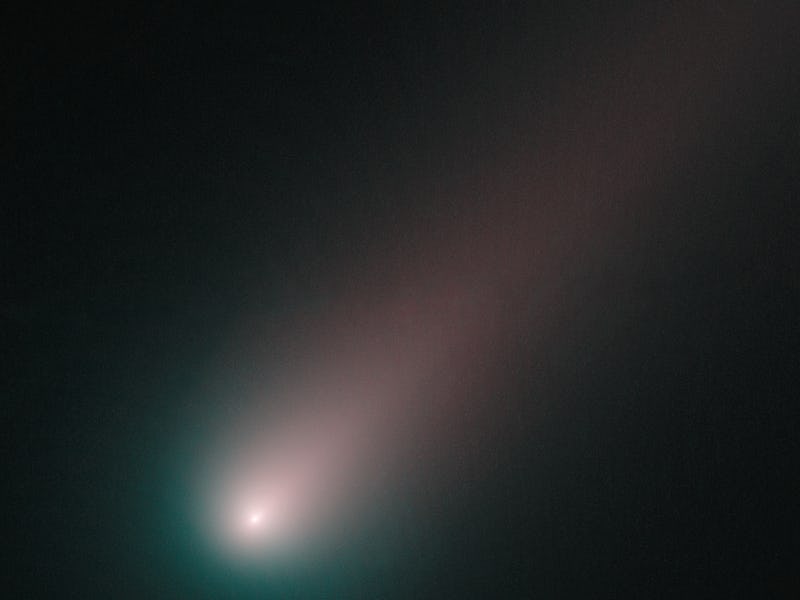Astronomers discover new comet that may be visible to the naked eye
Comet SWAN could grace our night skies in late May.

On March 25, amateur astronomer Michael Mattiazzo from Australia was looking through images captured by the Solar Wind ANisotropies (SWAN) instrument aboard the Solar and Heliospheric Observatory (SOHO) satellite, when he noticed a spot that would change position from day to day.
That spot would also have sudden outbursts of hydrogen gas, releasing huge amounts of water, about 1.3 metric tons per second, according to NASA.
As it turns out, that spot was an icy comet.
The comet was named SWAN, after the instrument that aided its discovery, and it is making its way towards our Solar System. Soon, we may be able to view this comet in the night sky with the naked eye.
Comet SWAN can be seen as a spot on the left side of this image captured by the satellite.
Comet SWAN will make its closest approach to Earth on May 13, where it will be at a distance of about 53 million miles. It will later make its closest approach to the Sun on May 27, where it will be 40.2 million miles away from our host star.
Although the behavior of comets can sometimes be erratic as they approach the Sun, astronomers are hoping that comet SWAN will be bright enough to view with the unaided eye by end of May and beginning of June.
Sky enthusiasts who live in the Southern hemisphere may have a better chance of seeing this comet as it streaks through the Pisces Constellation.
But that all depends on Comet SWAN holding it together as it approaches the Sun.
Comets are icy bodies of frozen gas, rock and dust, material that likely dates back to the formation of the Solar System. As comets travel closer to the Sun, they increase in brightness. Heat from the star causes them to burn, which in turn causes a glow.
However, not all comets survive the journey. The Sun's powerful gravity can weaken them, breaking them apart as they draw near.
This year, sky gazers have already been scorned once as they waited anxiously for another comet that was predicted to be the brightest light show Earth has had in years. Comet ATLAS was scheduled for a heated rendezvous with the Sun on May 23, where it would have been as close as about 72 million miles to the star, that’s closer than planet Mercury is to the Sun.
However, as Comet ATLAS drew closer and closer to the Sun, it broke apart and disintegrated into smaller fragments, along with our hopes and dreams.
But Comet SWAN is already showing some promising signs. The icy core of comets will release water vapor into space as the comet is heated by the Sun. By April 15, Comet Swan was releasing 1,300 kilograms of water vapor every second, which is a pretty fast rate of ejection compared to other comets, according to the European Space Agency.
The more material is released from a comet, the better chances we have of seeing it in the skies as the sunlight reflects off of that material. That is if it doesn't break apart first.
Comet SWAN is the 3932nd comet discovered by SOHO, and most of them have been spotted by amateur astronomers scouring through its images released online. The NASA and ESA Solar and Heliospheric Observatory was launched in 1995 to study the Sun. However, it has proven quite lucrative for comet hunters.
“It’s extremely exciting that our sun-watching observatory has spotted so many comets since its launch in 1995,” Bernhard Fleck, ESA SOHO project scientist, said in a statement. “We are eagerly awaiting, along with comet enthusiasts around the world, for the 4000th discovery, which might happen real soon.”
This article was originally published on